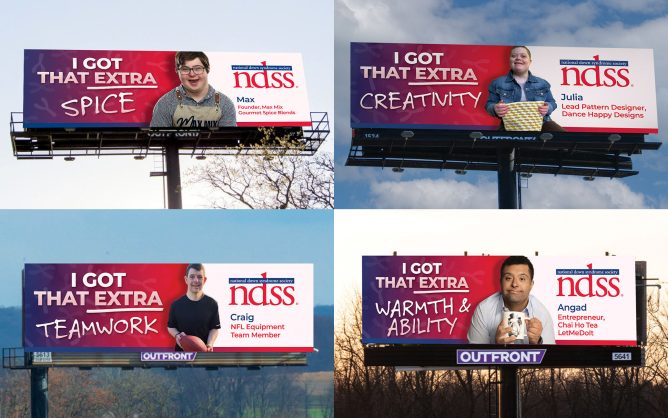The Bureau of Labor Statistics reports that the employment-to-population ratio among working-age people with disabilities is approximately 30 percent. That’s significantly lower than the ratio for working-age people without disabilities which is about 74 percent. The reasoning for this discrepancy is debatable. However, the Centers for Diseases Control (CDC) categorized the seven most common barriers among the disabled ─ attitudinal, communication, physical, policy, programmatic, social and transportation ─ which offers insight into challenges that can arise in the workplace and beyond. It’s important to note, though, that hurdles can be overcome!
Perhaps you’ve felt stereotyped by a disability and thought, ‘If I’d only be given a chance.’ Maybe we’re all guilty of unfairly judging others (whether consciously or subconsciously). You see, while the labor force has much to improve, it’s begun a positive culture shift pertaining to inclusion and acceptance. So, as it is discriminating to make assumptions about potential employees who have disabilities, it’s similarly conceivably that individuals presume companies won’t be willing to enhance accessibility, such as with the implementation of assistive technology, for example. Maybe both employers and applicants can give each other the benefit of the doubt!
Job hunts are generally stressful for all, and more so for those with disabilities despite employment rights. To align with an ideal employer, here are disability-related considerations when interviewing for and/or accepting a job offer:
1. Resume Reboot.
Sticking to a one-page resume is no longer mandatory. You may have a ton of experience (especially if you’re a seasoned professional well into an established career) and, so, trimming relevant accomplishments isn’t in your best interest. That’s not to say, of course, that you shouldn’t be very concise. Less can be more, as applications may only be skimmed – by either the human eye or digital software– for keyword matches.
Declaring an ‘objective’ is no longer necessary either because if you’ve applied for the position, your objective is understood: You want the job! Instead, bullet out strengths or craft a brief executive summary. Strategically integrate keywords that align with the job description, use varying descriptive words to avoid redundancy and, if applicable, quantify achievements for easy take-aways. Have a few printed copies of your resume on hand along with, if needed, a portfolio or sample work.
2. To Disclose or Not to Disclose?
Candidates want employers to focus on their abilities and not disabilities! Thus, seventy-four percent of disabled candidates will not share that they have a disability, according to the UK-based Recruitment Industry Disability Initiative. You don’t have to disclose… but should you? It’s a complex personal decision, especially if a disability is “invisible.” Some people choose not to call attention to a disability because it will not hinder job performance. Others communicate openly to address accessibility requirements and other needs. If your resume has an employment gap due to a disability-related necessity (i.e. treatment, recovery, etc.), you may want to address it and, then, communicate how you’re prepared and eager to return to work.
If there’s a disability-related factor (i.e. guide dog, interpreter, etc.) that may impact the interview itself, consider informing the interviewer in advance. He/she may offer helpful information, such as where to locate accessible parking and ramps.
3. Research!
Try to research the company and its culture to see if it fits with your vision. Does the company have an inclusion environment? Is it open to remote offices and flexible hours? Are diversity coaching and other essential programming established for all employees?
4. Educate to Empower?
Sometimes discrimination stems from a lack of understanding versus direct malice. We’re all human and most of us are not experts on every disability and disease. If you feel comfortable sharing and think a bit of education will ease reservations about your talents, talk to the human resources director and hiring manager about your disability. But, offer up only what’s necessary as the interview is about your professional abilities and not your disabilities. Of course, your main goal is to demonstrate your capable skills (not limitations) and why you’re the ideal candidate. Believe in yourself because confidence is infectious!
According to statistics posted on the United Nations website, a “2003 survey of employers found that the cost of adaptation to accommodate employees with disabilities was $500 or less. 73% of employers reported that their employees did not require special facilities at all.” While unfortunate, an ill-informed hiring manager may need to be told that he/she won’t need to go above and beyond to bring you on staff. If the interviewer is focusing too much on your disability versus your professional ability, you may want to advise that companies benefit greatly when people with disabilities are hired! For example, the IRS offers tax credits and deductions; a business gain that is, of course, in addition to improvements to company culture, diversity and much more.
5. Access Benefits.
During the interview phase, ask the human resources director about benefits. Will the company’s health plan meet your needs? Are there stipulations for in-network versus out-of-network physicians/services? Are dental and vision plans offered? How about employee assistance programs and family medical leave? Does the company offer disability insurance? What about life insurance? And don’t forget about retirement plans and employee-match initiatives.
Studies have shown that most disabled workers do not take more time-off due to health problems. Still, you may want to discuss vacation time. Some companies lump paid time-off and sick days together, while others designate a separate allotment for each. Is the sum adequate for you? How are appointments, like doctor’s visits, handled? Just like you can negotiate salary, you can also negotiate time-off.
6. Human Resources and Programming.
Some business sectors have unions that work on behalf of employees and some companies have internal groups [i.e. Employee Resource Group (ERG) or Business Resource Group (BRG)] that facilitate company improvements. Inquire about who oversees diversity programming, accessibility and other areas of interest. Also, are there continuing education or professional development opportunities– internal and external – to enhance employee skills and prepare for promotions?
7. Resources and Tips
The U.S. Department of Labor has a resource page specific to employment for individuals with disabilities. Here’s the link.The U.S. Department of Labor also funds an agency called the Job Accommodation Network (JAN) which has pertinent information as well. Aside from mainstream job search engines, check out sites that cater to job seekers with disabilities, such as gettinghired.com. If seeking part-time, freelance, temporary, remote or other flexible work options, try flexjobs.com. Through the National Organization on Disability’s employment tracker, you can access a list of the top diversity-friendly companies.
Additional Tips
First impressions matter, whether you consider yourself to be disabled or non-disabled. And, so, here are general job interview tips:
– Dress professionally. It’s better to be overdressed than under dressed.
– Arrive early. Traffic can be unpredictable so allow ample travel time. Arriving early will also grant you time to navigate a new building, a restroom break and a moment to collect your thoughts in the waiting room before heading in to interview.
– Be self-aware. Body language speaks volumes, so be aware of crossing your arms, nervously fidgeting or fiddling with your pen, for example. And, of course, be courteous with plenty of ‘please’ and ‘thank yous’ and limit the urge to crack jokes.
– Prepare! Make sure you’ve done your homework on the company and the position. That includes being able to articulate why you’d be a great fit and also asking questions of the interviewer. Smart questions convey that you are serious about your application and that you’re invested in the opportunity.
– Be positive. Forgo talking negatively about a previous employment situation. Exude positivity to present the best first impression.
– Dial in. Make sure that you’re able to dial into the conversation at hand with your utmost concentration. Turn your cell phone off to avoid disruptive rings and notifications.
– Limit social. Odds are the hiring managers Googled you prior to the interview. What will they find? It’s not a bad idea to set your personal social media platforms to private settings.
Source: Ameridisability




